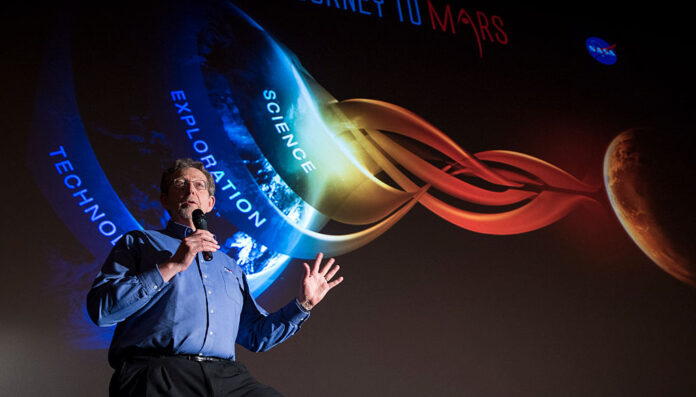Green said that the first step to human life on Mars would be bringing the climate to a point where “blood doesn’t boil if you walk out on the surface.” Ditching space suits would ultimately allow inhabitants more mobility, and the climate readjustment would allow for plants to grow.
Without a constant stream of high-energy particles, Mars’ atmosphere would begin to rebuild itself over time.
Story continues below advertisement
Green first revealed his Mars plan in 2017, during a presentation at the NASA Planetary Science Vision 2050 Workshop at NASA’s headquarters in Washington, D.C.
“The solar system is ours, let’s take it,” Green told the workshop. “And that, of course, includes Mars. But for humans to be able to explore Mars, together with us doing science, we need a better environment.”
Blocking Mars from the sun would not only allow the regeneration of the atmosphere, said Green, but would also allow for trapped water — an essential element for life — to rise to the plant’s surface.
Story continues below advertisement
Green’s presentation showed how, in just a matter of years, Mars could achieve an “Earth comparable field.”
Increasing the pressure would warm the planet’s equator, and eventually the polar cap would collapse, allowing the release of carbon dioxide. The carbon dioxide would turn to gas and begin to fill the atmosphere, melting ice and allowing the return of seas.
This image depicts an orbital view of the north polar region of Mars, based on data collected from two instruments aboard NASA’s Mars Global Surveyor, depicts an orbital view of the north polar region of Mars. About 620 miles across, the white sections are primarily water ice. Courtesy / NASA
In just a couple of years, Green hypothesized, the climate would stabilize.
“This is not terraforming, as you may think about it, where we actually artificially change the climate,” Green said.
“We let nature do it. And we do that based on the physics we know today.”
© 2022 Global News, a division of Corus Entertainment Inc.



